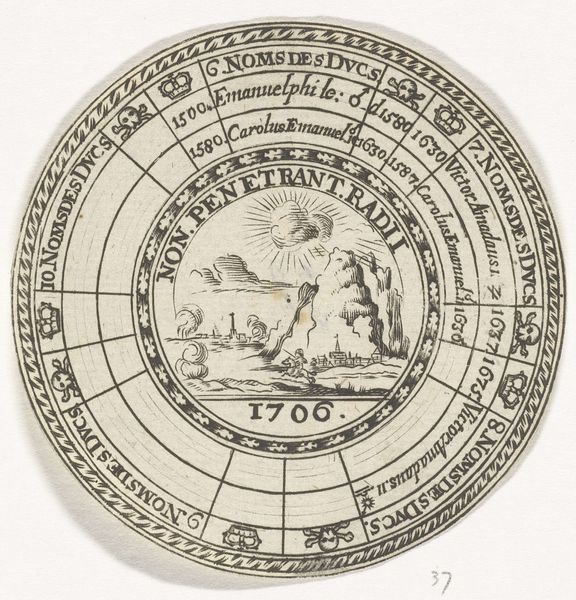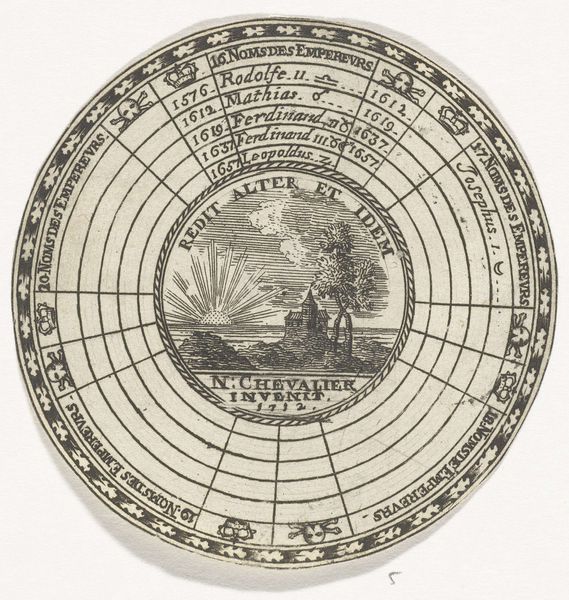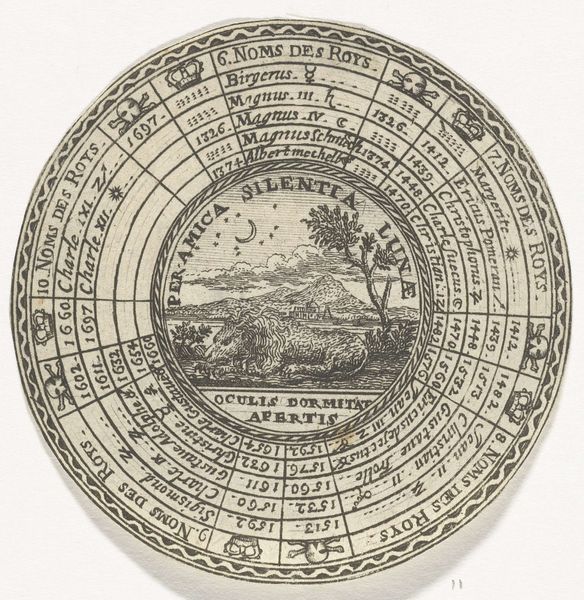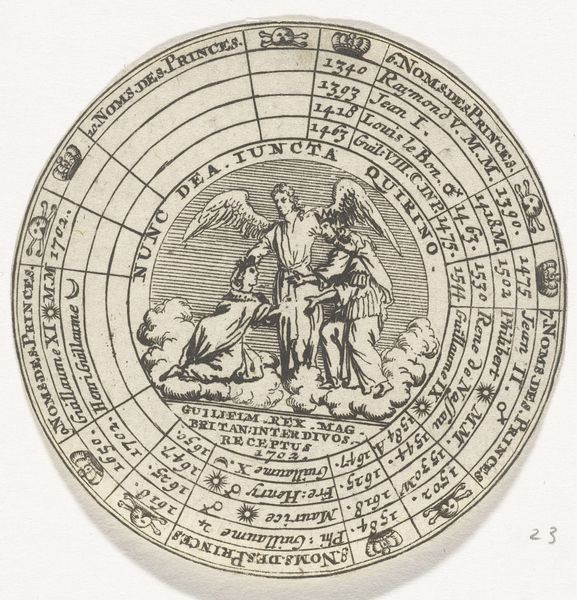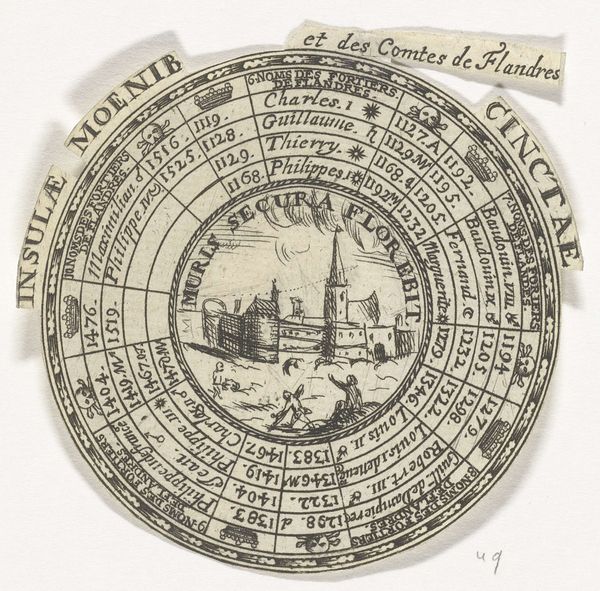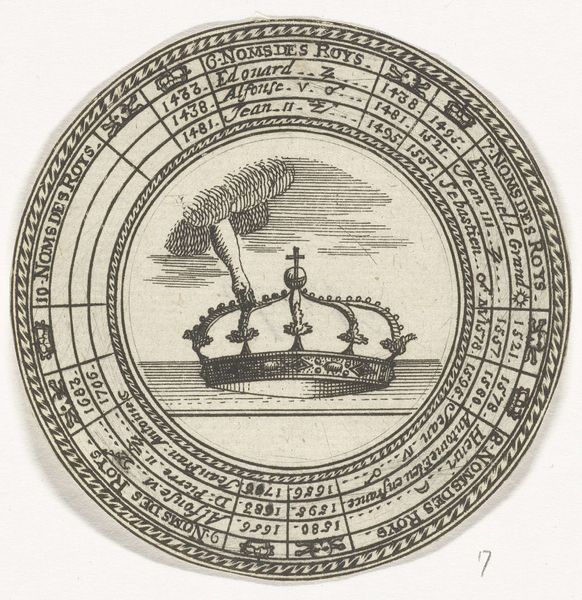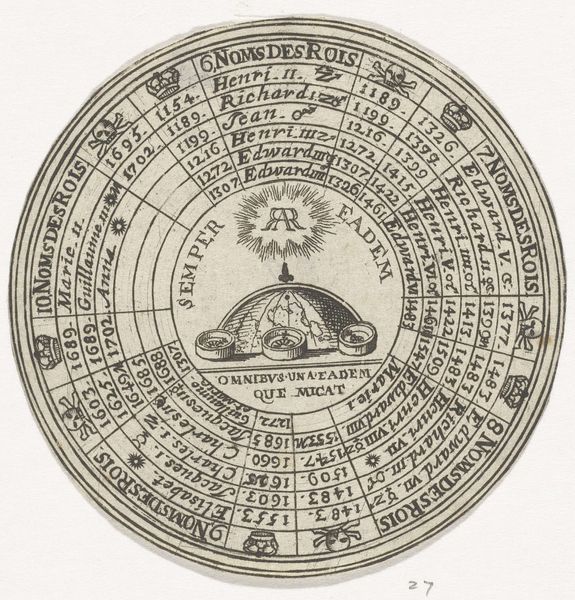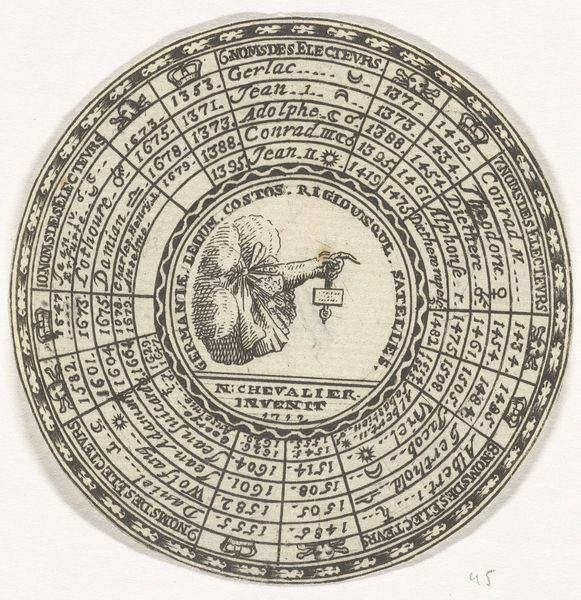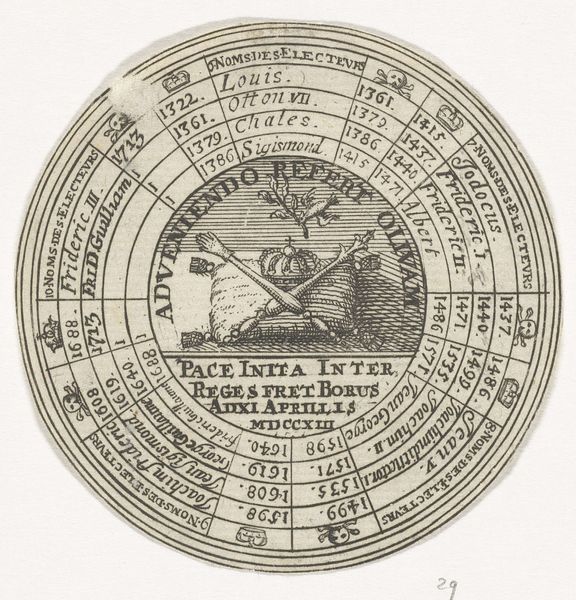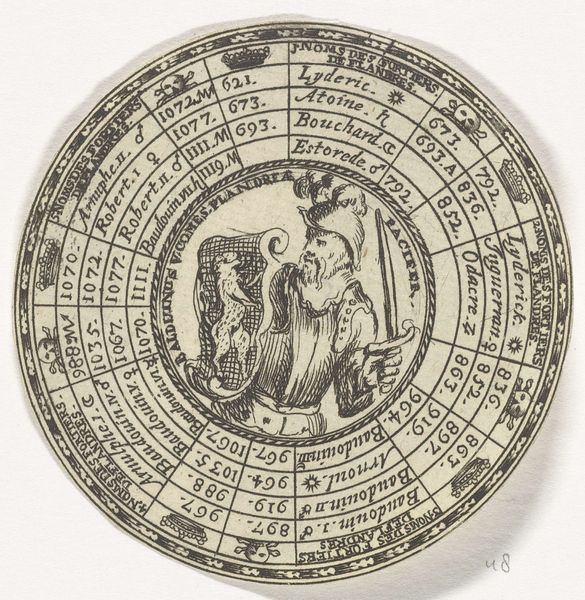
graphic-art, print, engraving
#
graphic-art
# print
#
old engraving style
#
geometric
#
line
#
pen work
#
history-painting
#
golden font
#
engraving
Copyright: Rijks Museum: Open Domain
Curator: This engraving, "Penning met een embleem en de namen van de Boheemse koningen" from between 1711 and 1720 by an anonymous artist, presents such a fascinating look at labor in its time. The detail achieved through the printmaking process – likely etching or engraving, given the time period – is captivating, isn't it? The use of ink on paper elevates it, while its commercial purpose would have situated it within broader systems of distribution and consumption. Editor: It really does. I am drawn to the intricate circular design, almost like a coin, yet crowded with text and imagery. What do you make of it? Curator: Well, let’s consider the labor involved. Engraving demands skilled craftsmanship; time-intensive work is key. This medallion, presenting a visualization of Bohemian kings amidst what appears to be farming, highlights labor literally in the imagery, and the production of the piece itself. What tensions do you see, if any, between the depiction of agrarian labor and the implied labor of those listed around the perimeter? Editor: That's a good point. I see this contrast, but I didn't think much about it. It seems odd that this history-painting-style emblem would focus so much on farming activities instead of military campaigns, or some royal figure in power. It almost appears that tilling soil would lead to obliteration of war - based on the inscription at the top - and allow power to prevail instead. Curator: Precisely! And notice, even the "golden font," is achieved not through actual precious metal, but the skillful manipulation of light and shadow using cheap materials! What do you think that says about value in this period, and how it's created or perceived? Editor: I am rethinking about the materials required to create such work in the past, given all the history represented here. It’s fascinating to consider how a simple print embodies such complexity.
Comments
No comments
Be the first to comment and join the conversation on the ultimate creative platform.
